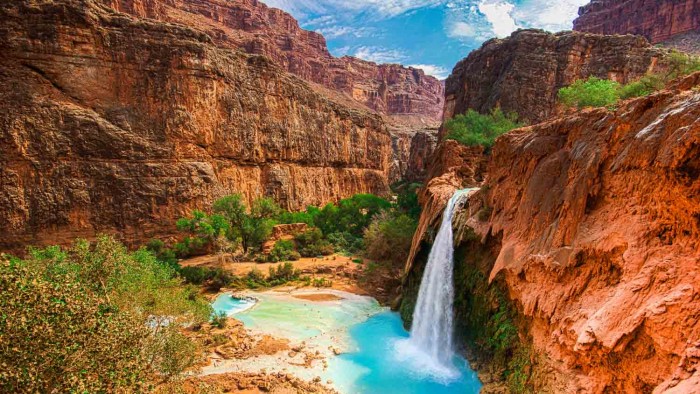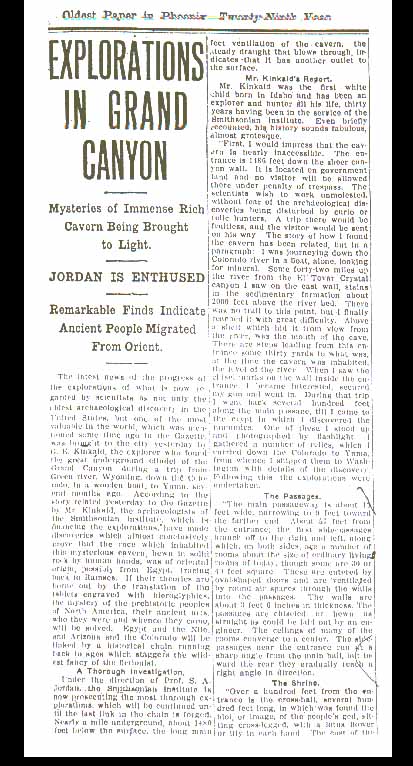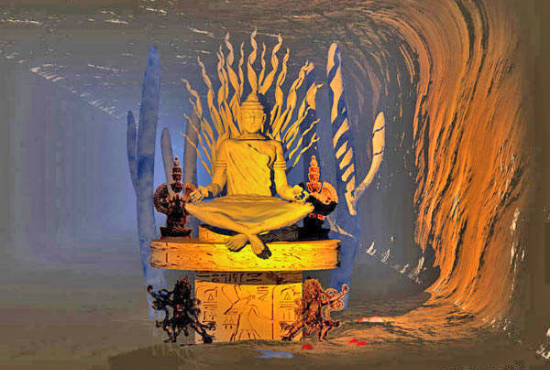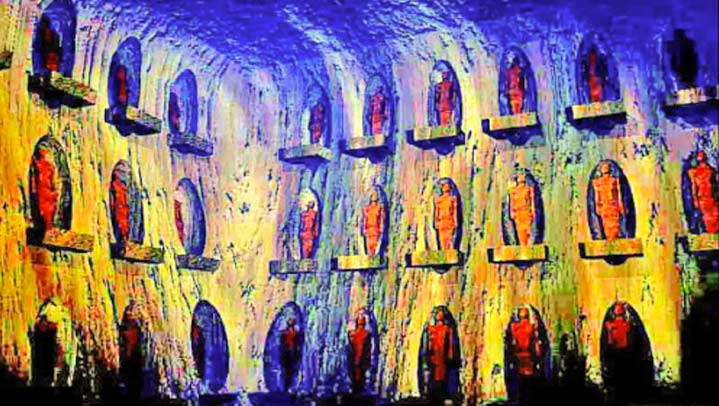Discovery Of The Lost City In Grand Canyon
Even with advances in modern day archaeology, most cities still remain a

Even with advances in modern day archaeology, most cities still remain a mystery. Great efforts are required to uncover mysteries and sometimes even luck is an important factor. One such discovery has also been made in the Grand Canyon.
Grand Canyon is a steep sided canyon in the state of Arizona in United States carved by the Colorado River, developed over the past 40 million years. It is 277 miles long, 18 miles wide and a depth of over a mile. The Arizona Gazette published an article on April 5, 1909 which stated that there existed a civilization in Grand Canyon years ago. These claims were made in the early 20th century by two Smithsonian funded archaeologists. They spoke of a thriving civilization in some remote portions of the Grand Canyon.
Lost Cave City In Grand Canyon?

A lengthy front page story gave a highly detailed report of the discovery. Professor S.A. Jordan and G.E. Kinkaid of the Smithsonian carried out an expedition which excavated this rock cut vault. The article noted
“Discoveries which almost conclusively prove that the race which inhabited this mysterious cavern, hewn in solid rock by human hands, was of oriental origin, possibly from Egypt, tracing back to Ramses. If their theories are borne out by the translation of the tablets engraved with hieroglyphics, the mystery of the prehistoric peoples of North America, their ancient arts, who they were and whence they came, will be solved. Egypt and the Nile, and Arizona and the Colorado will be linked by a historical chain running back to ages which staggers the wildest fancy of the fictionist.”
Front Page of Arizona Gazette

The article mentions about the discovery of an underground citadel which were made by G.E. Kinkaid. While rafting on the Colorado River, he was struck by this. An approximate one mile long tunnel was the way for the city’s entrance. Kinkaid said that the entrance was 1,486 feet down the canyon wall. The land belongs to government and so visitors are not allowed to trespass the area. The entrance could not be seen from the river. When he saw chisel marks inside the wall, he was excited to discover the insides and so he went on this exploration with his gun.
The architecture of the city gave an opinion that those builders were highly advanced in their engineering skills. In the middle of the city, there was a chamber which radiated various passageways. Hieroglyphic symbols were carved on the walls of chamber. These were very similar to those found in Egypt.
Mummified bodies were also present inside the citadel. They were wrapped in dark linen and none of them measured less than 9 feet.
Religious Explorations

A cross hall is present over a 100 feet from the entrance. It constitutes of cross legged idols or images that resemble Buddha, though scientists are not certain about the religion. They had a flower in each hand. The cast of the face and craving of the cavern is oriental.
Other Discoveries

Pottery and other instruments were also discovered according to this article. Such varied mixture of cultures is hard to encounter in archaeological finds and so this discovery holds unprecedented importance.
Another chamber explored by Jordan and Kinkaid was believed to be a ceremonial crypt. It was the room where all other mummies had been found.
“There is one chamber of the passageway which is not ventilated, and when we approached it a deadly, snaky smell struck us. Our light would not penetrate the gloom, and until stronger ones are available we will not know what the chamber contains.
Some say snakes, but others think it may contain a deadly gas or chemicals used by the ancients.
The whole underground installation gives one of shaky nerves and the creeps.”
Are these related to the Egyptians?
Names like Cheops Pyramid, Buddha Temple, Buddha Cloister, Manu Temple and Shiva Temple were found in this area. A Grand Canyon state archaeologist said that early explorers bore Egyptian and Hindu names.
These dangerous caves have been kept off limits for hikers and visitors. This forbidden area has been named after the Egyptians and Hindus.
Smithsonian Denials
No records exist in Smithsonian’s Department of Anthropology about Professor Jordan or Kincaid. There is not even a paper trail that gives details about this expedition. About Kincaid’s claims, a representative of the Smithsonian Institute said
"Well, the first thing I can tell you, before we go any further, is that no Egyptian artifacts of any kind have ever been found in North or South America. Therefore, I can tell you that the Smithsonian Institute has never been involved in any such excavations."
Explorers Returned Without Any Evidence

Arizona Gazette article is the sole evidence of this expedition. Kincaid and Jordan did not bring along any artifacts or pictures of their explorations. Apart from this information, no other data substantiates the existence of Jordan. There is one known reference of Kincaid that came in March 12. An article in Arizona Gazette notes that he is in Yuma, Arizona. It mentioned that he was an avid photographer who had advanced equipments. But this seems questionable since no photos of Buddha or mummified bodies have been found.
It can also be a possibility that Kincaid worked under a false name if he had existed. Arizona Gazette mentioned his hunts for ‘the mineral’ (gold).
Popular Posts
Top 10 Sharpest & Deadliest Swords In History
In classic mythological movies, books and television, we’ve seen those audacious sword-wielding heroes smiting the enemi...
Augustus Perez
List of Water Deities from Different Mythologies
Water deities are the gods and goddesses who had the powers to control the elements of water and ruled over all the fresh and saltwater of the earth. Here’s a list of water deities from different mythologies.
Rishika Gupta
Winged Lion: The Terrifying Mythical Creature In Different Mythologies
A mythological creature, a winged lion dates back to ancient times. This flying lion-like creature has origins in Heraldry, Christianity, Mesopotamian, and Greek mythologies.
Ethan Stephans








